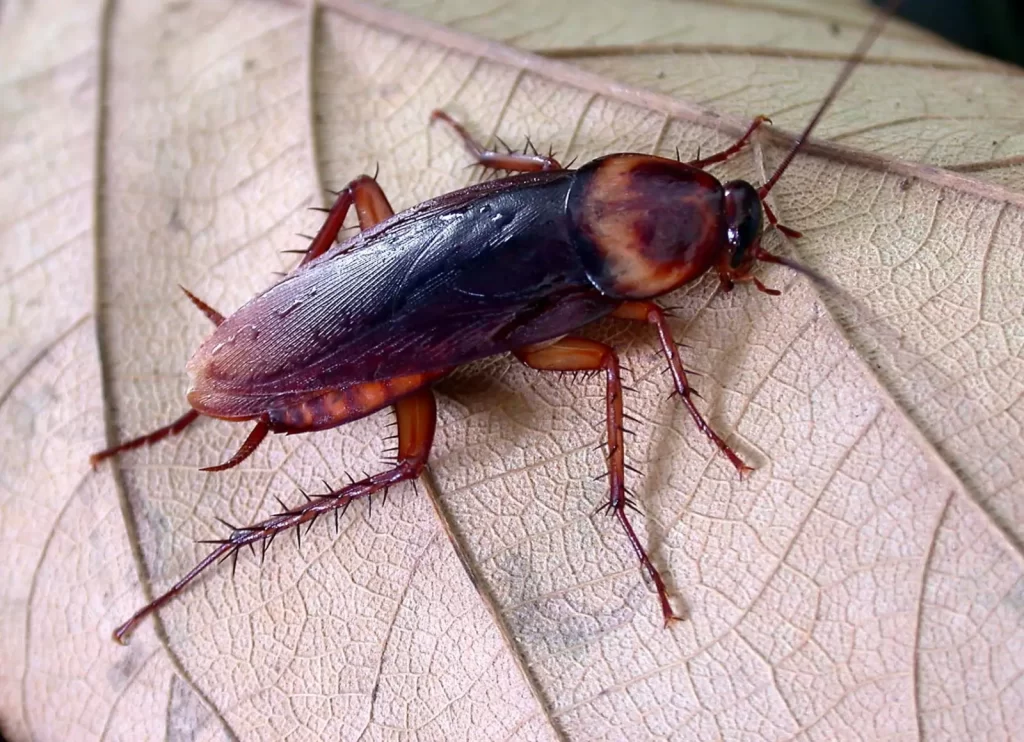Understanding the differences between the Smokybrown and American cockroaches can help you identify and manage these pests more effectively. Here’s a detailed comparison of these two common cockroach species.


Smoky brown vs. American Cockroach: Comparison
| Feature | Smoky brown Cockroach | American Cockroach |
| Scientific Name | Periplaneta fuliginosa | Periplaneta americana |
| Appearance | Dark brown to black, with a lighter edge on the wings | Reddish-brown, with a yellowish band on the back of the head |
| Size | 1.5 to 2 inches long | 1.5 to 2.5 inches long |
| Feeding Habits | Feeds on decaying organic matter, plants | Feeds on a variety of foods, including food scraps and dead insects |
| Living Habits | Prefers humid environments like mulch and leaf litter | Commonly found in sewers, basements, and kitchens |
| Flight Capability | Capable of flying | Capable of flying, but rarely does |
| Behavior | Active mostly at night | Nocturnal, often hides during the day |
Characteristics
Smoky brown Cockroach:- Appearance: The Smoky brown cockroach is dark brown to black, with a lighter wing edge. This coloration helps it blend into natural habitats, such as mulch and leaf litter.
- Size: It typically measures between 1.5 to 2 inches in length.
- Flight: Smoky brown cockroaches are good fliers. They often use their flight capability to move between different areas in search of food.
- Appearance: The American cockroach is reddish-brown and has a yellowish band on the back of its head. Its color and size make it easily identifiable.
- Size: It is slightly larger than the Smoky brown cockroach, ranging from 1.5 to 2.5 inches long.
- Flight: Although it can fly, the American cockroach prefers to stay hidden during the day and uses its wings primarily to escape from danger.
Feeding Habits
Smoky brown Cockroach:- Prefers feeding on decaying organic matter, such as leaves and mulch. It is commonly found in outdoor environments, especially in humid and warm areas.
- These cockroaches can be attracted to areas with high moisture levels and rotting plant material.
- Feeds on a wide range of substances, including food scraps, dead insects, and even other cockroaches.
- It is often found in urban environments, including sewers, basements, and kitchens, where it can access a diverse food supply.
Living Habits
Smoky brown Cockroach:- Prefers environments with high humidity, such as gardens, woodpiles, and under mulch. It thrives in outdoor settings and is often seen in the evenings or at night.
- Less likely to invade homes but can become a problem if conditions are suitable.
- Commonly resides in urban areas, particularly in sewers and basements. It can also invade homes, particularly kitchens and bathrooms where food and moisture are present.
- It is a resilient pest and can adapt to various environments, making it a challenging pest to control.
Myths and Facts
| Myth | Fact |
| Smoky brown cockroaches are the same as American cockroaches. | They are different species with distinct appearances and habits. |
| American cockroaches don’t fly. | They can fly, but they prefer hiding and use flying as a last resort. |
| Smoky brown cockroaches only live outdoors. | While they prefer outdoor environments, they can enter homes under certain conditions. |
| Cockroaches are only a problem in unsanitary conditions. | Both species can invade clean homes if they find food and moisture. |
| All cockroaches are equally harmful to health. | American cockroaches are more commonly associated with health issues due to their urban habitat. |




